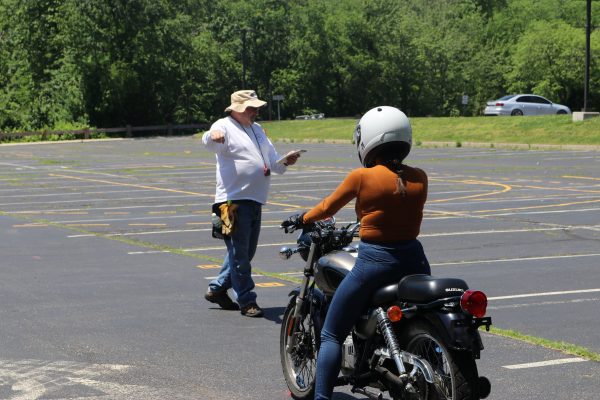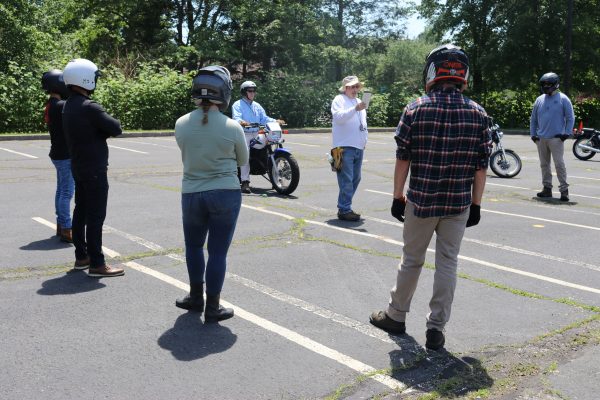NAUGATUCK, CT – The subject of emergency braking came up recently in posts on motorcycle social media groups, at a club rally and while on a group ride, so perhaps a review of proper techniques is overdue.
Learning, practicing and always using the correct emergency braking practices will not only keep your braking skills sharp but, more importantly, will help develop the habits and necessary muscle memory that will instinctually produce benefits if you’re presented with a situation where these skills are needed.
First, consider the importance of the mental skills that apply to riding. It is paramount to have 360-degree awareness and to always be searching for potential hazards. This allows a response to a hazard to happen earlier rather than at the last moment.

This difference between being perceptive and proactive versus reactive can reduce the need for emergency braking.
Front Brake Provides More Braking Power
Correct braking involves using both front and rear brakes at the same time. The front brake provides 70 percent or more of the total braking power, with the rear brake making up the remainder.
Proper front brake use for street riding begins with using four fingers to squeeze the brake lever. Four fingers provide the most strength to squeeze progressively and fully. When fewer fingers are used, they will typically be in the way. The brake will then have to be released to be able to fully apply the brake.
If four fingers are used all the time for braking, once again a habit will develop as well as muscle memory. This bears repeating: How a rider uses the brakes most of the time will be what the rider does instinctually in a reactive situation.
Total Stopping Distance Explained
How much time/distance is needed to make a complete stop? At 60 miles per hour, a rider travels about 90 feet per second. According to Motorcycle Safety Foundation, the total stopping distance at this speed will be 300 feet or more.
The Total Stopping Distance is the distance traveled to come to a complete stop and includes 1) Perception Distance (the distance traveled before a hazard is perceived); 2) Reaction Distance (the distance traveled between perceiving the hazard and beginning to apply the brakes); and 3) Braking Distance (the distance traveled after applying the brakes and coming to a stop).
Attaining the shortest stopping distance during emergency braking requires understanding the maximum straight line braking technique, also called Threshold Braking.

The definition of Threshold Braking is full application of both brakes without locking either wheel. On motorcycles with ABS, it is the point right before the system kicks in. Too many riders feel they can replace good braking skill with an ABS brake system. When ABS kicks in due to over-braking (locking the wheels), the total stopping distance will increase.
There are dangers to over-braking and locking up the motorcycle’s wheels, and this is where ABS can help. If the rear wheel is locked up the ability to steer is lost and releasing a locked rear wheel can lead to a high side crash. The danger of front wheel lock-up is total loss of control and possible crash if the front brake is not released in time.
When braking, weight is shifted forward. The harder the braking the more weight is shifted forward to the front wheel and it will have more traction available, and the rear has less requiring less foot pressure. This added traction in the front allows more front brake pressure to be used.
Front brake usage is described as a “progressive squeeze” – continually applying more front brake as weight shifts forward. The progressive squeeze will continue until the bike comes to a complete stop or the lever touches the handgrip.
Emergency braking is a skill every rider should be proficient with. It takes practice. For many, taking an Experienced Rider Course as a refresher can be a fun and easy way to improve your riding skills.
Hello! If you found this column useful, please share it with other motorcyclists by clicking on the social media buttons below.
 Ride CT & Ride New England Serving New England, NYC and The Hudson Valley!
Ride CT & Ride New England Serving New England, NYC and The Hudson Valley!

